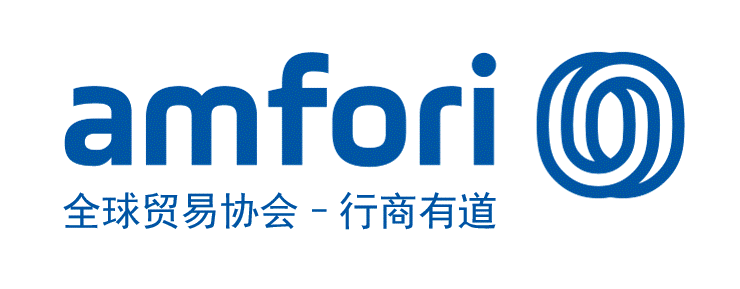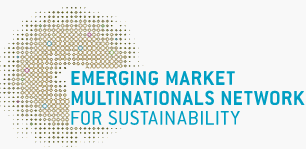Home > Knowledge > CSR Research >
A new era of business models has arrived
2019-03-01GoldenBeeadmin0010

Interviewee|Mr. Patrick Bungard, Director of CASM at the Cologne Business School
Patrick Bungard is a director of the Center for Advanced Sustainable Management (CASM) at the Cologne Business School. He has considerable professional experience in the management consulting field, particularly in the areas of CSR and the nonprofit sector.
Patrick's book CSR and Business Models: The Way to Modern Business has been translated into Chinese and it will be published in China soon. This book focuses on the sustainable business model and brings together the views of many experts from the perspective of social entrepreneurs, businesses and scientists. They share their experiences in designing sustainable business model, including practical examples and recommendations for basic ideas and creating new business model.
China Sustainability Tribune interviewed Patrick Bungard about his book. Patrick believes that a sustainable business model has the potential to provide the solutions for the most pressing challenges of our time and to make a significant contribution to renewing our understanding of the economy.

China Sustainability Tribune: Your book CSR and Business Model: The Way to Modern Business has been translated into Chinese and it will be published in China soon. This book focuses on the principles and practices of “CSR and business model”. It not only describes the direction of corporate management reform, but also shows the value of innovative business model brought by CSR. So, we would like to know, when did you start to focus on the study of “CSR and business model”? What drove you to start this study? Why did you think this study was significant? As far as you know, how is the progress of this study all over the world?
Patrick: First of all, it is important for me to say that it is a great honor for me that the book CSR and Business Model will be published in China. I am particularly pleased that the book will reach new cultures and economies.
The idea for the book has developed continuously over the course of my professional career. For more than 10 years of working in the profit and non-profit sector, I realized the potential of reconciling business competence and social innovation. I have learned to dissolve the dichotomy between profit and nonprofit and to see organizations holistically. I have learned during my career as business consultant with the global company Accenture, that profit and sustainability are not contradictory. On the contrary, they are interlinked and interdependent. Sustainability can lead to massive competitive advantages, if fully integrated into the business. On the other side, businesses can leverage social and ecological impact.
During my professional career, I have met so many inspiring people with fascinating ideas to combine those two aspects (sustainability and business) and they have created amazing business models. Since then I am interested in innovative business models which integrate social and environmental aspects in a profitable way. The book compiles various cases and expert insights, illustrating how shared value is created – simultaneously for the organization and for the whole society. In times of global challenges such as rapid changing business environments, climate change, population density and demographic changes – to name just a few examples – businesses feel increasing pressure to adapt. First, they have to stay competitive. Second, they have to shoulder their societal responsibility. In my opinion, it is significant to work in this field of study because it demonstrates that profit maximization and benefits for the society are not mutually exclusive. Indeed, management approaches which address both aspects reveal promising chances and opportunities.
In general, one can observe the development of a rather international understanding of sustainability promoting the integration of CSR into the Corporate DNA, the core activities of the businesses. Regional differences have slowly converged. However, in Europe one can see a pronounced entrepreneurial approach to CSR, while in the US, it is a historical tendency towards a more philanthropic approach to CSR prevails. The dialogue with experts from Asia reveals that the bottom-of-the-pyramid concept plays an important role in the design of business models. In China, one can observe an aspiration of businesses to improve the quality of life for the society, for instance with regard to air pollution, and simultaneously the reputation of the firm.
China Sustainability Tribune: Integrating CSR into the core strategy and business of an enterprise is not a new thing. CSR management was proposed many years ago and has been widely recognized and applied. Nowadays, we have proposed the sustainable business model. Could you tell us what the differences between sustainable business model and CSR management? What are the internal logic and core points of sustainable business model? And what are the typical practices we can get from enterprises?
Patrick: Today businesses are increasingly judged by the extent to which they consider the main interests of society. Thus, the concept of corporate social responsibility has been transformed dramatically over the last couple of years. From a pure philanthropic perspective (sponsoring and donations), instead of being merely a legal compliance approach, it has developed into an explicit responsible management issue. The terms ‘Sustainability Management’ and ‘Sustainable Management’ illustrate the difference of the two approaches. While the first term entails that profit maximization is still the main driver and social impact is only an add-on, firms engage in explicit CSR projects which focus on the reduction of negative impact of business on the society.
The impact of those activities is mostly only measured separately from economic KPIs. In contrast, ‘Sustainable Management’ systematically integrates social impact into the main driver of profit maximization. Thus, CSR becomes an integral part of the business model and the strategy. Strategic and operational management not only focuses on reducing the negative impact of its operations on society, but also on creating positive impacts. Currently, approaches to measure and control the social, environmental and economic aspects are in an integrated way. However, it has to be underlines at this point that both the strategy as well as impact measurement approaches have to be developed in the company-specific context. Only by taking the core competencies, the value chain and the customer base into account, the true potential for the business and the society can be unveiled.

Patrick: Businesses as responsible corporate citizens no longer want to be viewed as a problem, but are aiming to provide solutions for the pressing challenges of our time. This realignment of strategy among leading enterprises increases their competitiveness and provides urgently needed solutions for society – so called social innovations. To identify a sustainable way of doing business, it is important to not just report. What we are facing at the beginning is that identifying leverage in a particular business environment, and execution is sometimes more challenging. Only if a business is able to take strategic decisions that reflect social and environmental aspects - and not merely considers economic aspects, it can be sustainable. To transfer from traditional business models to sustainable business models, it can be helpful to also define the outcome, meaning the result of selling or buying this product by the business or the target group. Even more important is to think about the impact, which is the change caused in the wider society or the environment.
China Sustainability Tribune: Changing the ways of thinking is the basis for realizing sustainable business model. Therefore, besides the above suggestions at the technological level, what other suggestions do you have on how to understand the relationship among sustainability, ways of thinking and business model?
Patrick: To take up the rather technical explanations on the IOOI-method above, the category ‘impact’ plays a pivotal role in changing our way of thinking. Managers and entrepreneurs are used to start with considerations about output. However, to uncover the true potential of a sustainable business model, it makes sense to start with the positive impact which the business could generate. This means to consider the change you want to see in the future or the transformation the society needs. The next step is to identify a way to get there and to monetize the activities. Therefore, we should start thinking about today from the future, including a shift of mindset.
Another important aspect in understanding the relationship between sustainability and the business model is to overcome the notion that sustainability and profitability constitute a trade-off. As I explained above, the paradigm shift toward a shared value for business and society, letting managers and entrepreneurs recognize the potentials of their business model. A sustainable approach can reveal access to new markets, foster innovation, enhance the resilience of the supply chain, and improve the brand and the firm’s position in the ‘war for talents’. Finally, it leads to better reputation and acceptance from different stakeholder groups.
But this paradigm shift is as powerful as the intentions of the actors who drive changes. While a paradigm shift is required, first movers can initiate the transformation and act as a role model. They can not only get economic benefits from this Unique Selling Proposition, but also have a powerful impact when competitors follow the approach of sustainable business models as well.
China Sustainability Tribune: What are the advantages and disadvantages of SMEs (Small and Medium Enterprises) and large enterprises respectively in establishing sustainable business model? Do SMEs face greater challenges?
Patrick: At a first glance, one might think that SMEs compared to large enterprises lack the resources for a transformation towards a sustainable business model. In fact, sustainable business practices are already an integral part of smaller enterprises. The norms and values of SMEs often show a close relationship to the local society and environment. Managers and entrepreneurs feel personally responsible for employees and other stakeholders. Additionally, they are often more flexible and agile. They first recognize opportunities, and then implement the respective changes. This is particularly obvious in the case of social start-ups. One can observe that initially rather small players are able to disrupt whole industries in the sense of a blue-ocean approach. Thus, it is shown again that ethical practices not only represent an added-value for society and environment, but also have clear competitive advantages.
China Sustainability Tribune: "Digitalization/intelligence" and "sustainability" are the main trends in today's world. Are there any connections between them? In the digital world composed of big data, IoT and cloud-computing, how should the new economy (digital economy) develop the sustainable business model?
Patrick: The same logic of combining value creation for the society and business applies here. Starting with the impact, a solution is provided to a social or environmental problem in the context of digitalization. This is often a technical solution. Thus, digitalization can act as an enabler of sustainable business models.
Indeed, the term “business model innovation” only was framed from the 1990s onwards with the spread of the Internet and in increasing international connectivity. This might have become one of the most significant enablers of social and environmental impacts. To make this argument tangible: We see the use of smartphones spreading in nearly all regions – this is significant when we think of regions which were formerly excluded from development. The internet and the use of smartphones, such as in the case of decentralized energy supply or access to finance sometimes, ‘kickstarts’ the sustainable development.
Other examples are definitely the developments in the field of data analytics helping to use resources more efficiently by providing real-time information of predicting the need of materials in certain situations. Simultaneously, this can increase transparency and precision. Also the business model of the sharing economy is not conceivable without smartphones or access to internet. Only connectivity enables the use of idle resources. A lot of sustainable business models based on blockchain technology have already showed us how trust, decentralization and transparency can be increased today.
Artificial intelligence, the Internet of Things and 3D printing – to name just a few further developments – are gaining relevance in the context of exponential organizations, and growing more than 10 times faster as incumbents. Their ‘massive transformative purpose’ (MTP), such as in the case of Google which decided to ‘organize the world’s information' disrupts whole industries and the way of thinking about business models. Nevertheless, it is important to not only exploit the mentioned technologies in a short-term perspective to facilitate growth but to use the opportunity create long-term impact.
China Sustainability Tribune: As far as you know, what is the development status of sustainable business model in Germany and other countries in Europe? How do you evaluate the level of sustainable development in the above two regions? Regarding the sustainable business model in China and other regions, what's your point of view? Can you give some suggestions for the enterprise managers in the world, including those in China on how to realize the sustainable business model? What are your expectations to them?
Patrick: The international conferences in China and the exchanges with colleagues from China and other fast-growing economies illustrate a key difference between the governments' approaches. While in Germany, businesses are often regarded as the main driver of sustainable transformation. The initiatives of the Chinese government, however, show how effective a top-down approach can be. The supportive agenda results in a fast implementation in various industries – especially with respect to SOEs (State owned enterprises). In addition, entrepreneurs such as Jack Ma and Pony Ma explicitly see their enterprises as social enterprises and deliver additional value to the society. Such values are obviously deeply rooted in Confucianism and Communism. It remains to be seen at which scale such ideas will be integrated into the core business activities. Indeed, sustainable development is facilitated if managers decide to refrain from business as usual and then spend money with a philanthropic motivation. Much more impact will be created for society and business if the social idea is the starting point and then realized in a sustainable business model.
China Sustainability Tribune: Are there any other messages or information that you would like to convey and express to the readers?
Patrick: Yes. It is an economic and moral obligation to bring business models into line with the challenges of our time. Let's write a new story of business together.
Best Practices
- The 100-year brand — Air Liquide also has a sense of juvenile
- Beijing Public Transportation Corporation: Developing green transportation to build a harmonious and livable capital
- CGN: Building a modern factory in barren deserts and developing a new win-win cooperation model along “Belt and Road”
Upcoming Event

All the materials on the site “Source: XXX (not from this site)” have been reprinted from other media. They do not imply the agreement by the site.
All the materials with “Source: CSR-China Website” are the copyright of CSR-China Website. None of them may be used in any form or by any means without permission from CSR-China Website.
GoldenBee Official WeChat
Copyright © Csr-china.net All Right Reserved.
京ICP备19010813号










